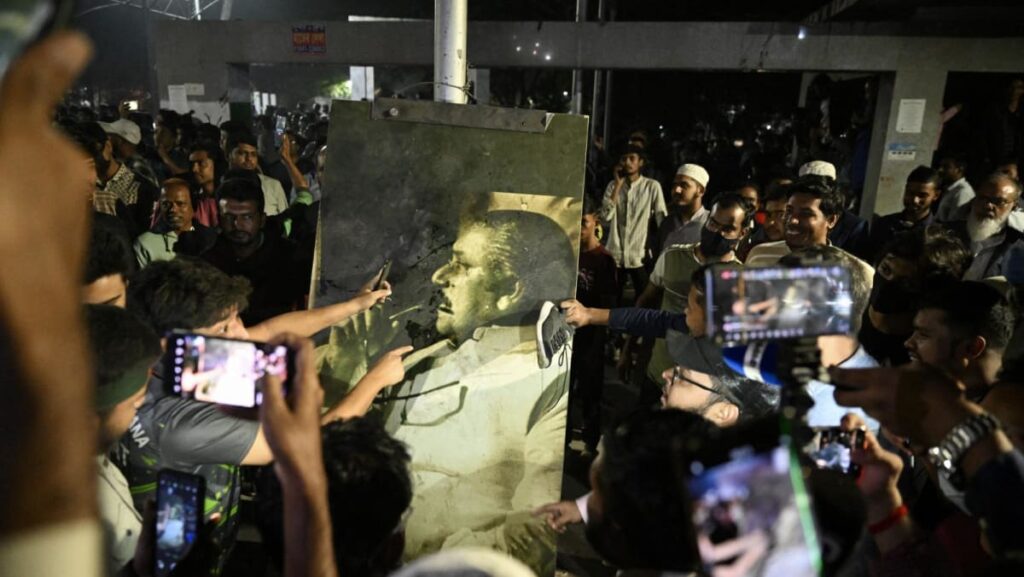Protests were triggered in response to reports that 77-year-old Hasina – who has defied an arrest warrant to face trial crimes against humanity – would appear in a Facebook broadcast from exile in neighbouring India.
Buildings destroyed included the museum and former home of Hasina’s late father, Bangladesh’s first president Sheikh Mujibur Rahman, sparking condemnation from a group of civil rights activists.
There were also clashes between anti-Hasina protesters and members of her Awami League party.
The interim government blamed Hasina for the violence.
On Friday, interim leader and Nobel Peace Prize winner Muhammad Yunus appealed for calm,
Hours later, members of the Students Against Discrimination – the protest group credited with sparking the uprising against Hasina – were attacked in the Dhaka district of Gazipur.
The vocal and powerful group – whose members are in the government cabinet – then demanded action.
The government said operations began after gangs “linked to the fallen autocratic regime attacked a group of students, leaving them severely injured”.
The operations have raised concerns.
The government said it had tasked a special “command centre” team to “oversee the efforts of the law enforcement agencies”, Shafiqul Alam, press advisor to Yunus told reporters.
But Supreme Court lawyer Snehadri Chakravarty slammed the operation as “eye-wash”, saying mass arrests risked sweeping up “innocent people” without addressing core problems.
“I don’t think this drive will significantly improve the worsening law and order situation,” he said. “To me, it seems like mere eye-wash.”
https://www.channelnewsasia.com/asia/bangladesh-crackdown-arrests-sheikh-hasina-unrest-protests-gangs-students-4928271


